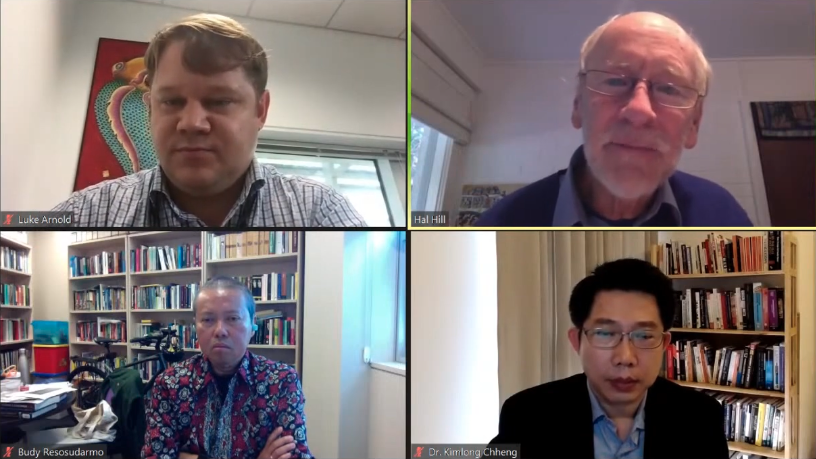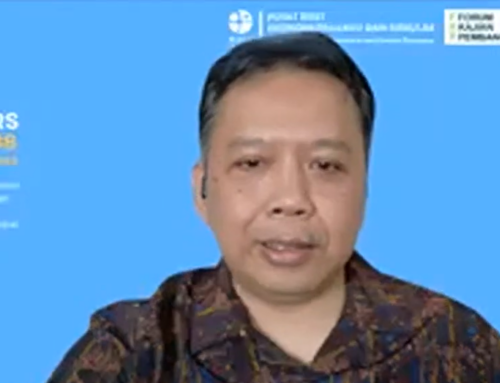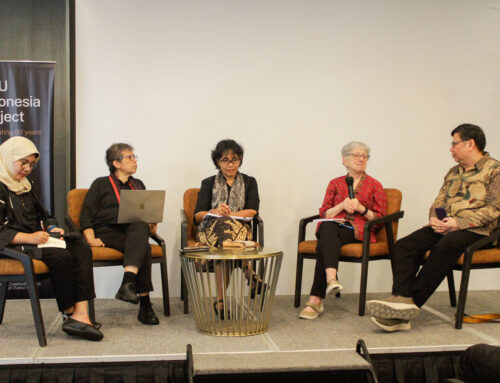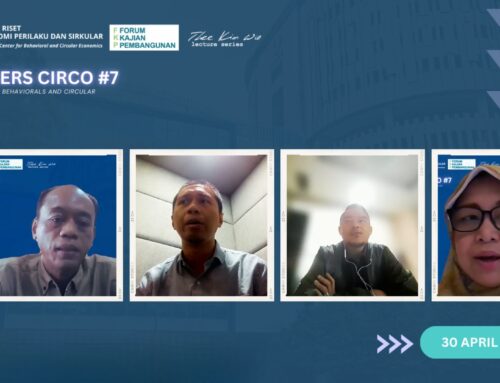FKP hosted by ANU Indonesia Project with Professor Hal Hill (Australian National University), Chheng Kimlong (AVI) and Luke Arnold (Deputy Ambassador, Australian Embassy-Phnom Penh). Thursday, 8 April 2021.
KEY POINTS:
- Compared to other major developing regions at the end of the second world war, Southeast Asia was a very poor region. However, Southeast Asia’s per capita regional GDP has grown dramatically over the past 60 years, leaving Latin America and Sub-Saharan Africa behind. Southeast Asia economies are converging towards a higher income level. Rapid and sustained economic growth is very unusual. A study by the World Bank in 2008 shows only 13 out of about 150 countries in the last 100 years averaged 7 percent annual growth for over a decade, and they are mostly from East and Southeast Asia.
- There are large variations in the impact of COVID-19 in Southeast Asia. Vietnam controlled COVID-19 quite effectively and had positive economic growth in 2020. Thailand, which managed the COVID-19 reasonably well, took a big hit in growth, whereas Indonesia which struggled to manage the pandemic was not hit nearly as badly. These outcomes are affected by a range of economic, demographic, geographic, political, and health factors.
SUMMARY
- Luke Arnold from Australian Embassy in Phnom Penh shared several observations related to the dynamics of the economic situation in Southeast Asia during the COVID-19 pandemic. Since the COVID-19 pandemic, social protection has become very important for Southeast Asia countries, something that previously had not been of serious concern. Across Southeast Asia, the pace at which the economy recovers and the types of economic activity that drive the recovery will have massive impacts on the 650 million people that live in Southeast Asia. Australia is supporting the region in vaccine access, support for regional integration through ASEAN Secretariat, new economic partnership, and support for the effort to bridge the development gap in Southeast Asia.
- Professor Hal Hill from The Australian National University spoke about the economic development in Southeast Asia and how the political economy is at play during the COVID-19 pandemic. Southeast Asia is a relatively recent geographical construct. In the mid-1960s, the three developing giants such as Indonesia, India, and China were struggling with economic development. It was a very gloomy place, Vietnam Indo-China war was intensifying, Pyongyang-Peking-Hanoi-Phnom Penh-Jakarta axis of NEFO’s, confrontation between Indonesia and Malaysia, and Singapore-Malaysia separation. There was not a lot of sign of economic dynamism.
- Compared to other major developing regions at the end of the second world war, Southeast Asia was a very poor region. However, from the late 1960s, the beginnings of rapid economic growth started, occurring also in East Asia particularly in Japan and South Korea. It is a part of the change in the global economy’s center of gravity which is heading to the eastern hemisphere. Then from the late 1960s, the growth started to ascend. Southeast Asia’s per capita regional GDP has grown dramatically over the past 60 years, leaving Latin America and Sub-Saharan Africa. Living standards have also been improving in Southeast Asia over the last 20 years (1997-2017) and the region is converging towards a higher income level.
- Rapid and sustained economic growth is very unusual. A study by the World Bank in 2008 shows that rapid sustained growth is a relatively rare phenomenon, only 13 out of about 150 countries in the last 100 years averaged 7 percent annual growth for over a decade, and they are mostly from East and Southeast Asia. While there is considerable diversity within Southeast Asia countries’ economic development, relative GDP per capita shows that there has been less diversity lately. Lower-income economies (Cambodia, Laos, Myanmar) are catching up with the higher-income economies.
- What are the political economy underpinnings of Southeast Asia’s rapid growth? Why have good policies been adopted quite often? In the earlier period, there were some recurring elements: authoritarian leaders with growth compacts (Lee Kuan Yew, Soeharto, Mahathir). With the rise of democracy, however, the whole political system has changed. In successful countries, generally, there are 3 recurring factors: a leadership committed to reform and growth, the power of ideas (universities, think tanks, etc), and supportive bureaucracies. There is also the ‘virtuous circle’ of regional demonstration effects from fast-growing economies in the neighborhood.
- What has Southeast Asia been good at, that other developing countries can learn from? Managing export-oriented industrialization with FDI, maintaining sound macroeconomic management, resilience, and recovery from deep crises, managing a sudden transition from authoritarian to democratic rule while maintaining growth, and achieving high growth after a brutal conflict.
- What has Southeast Asia struggled with? Reforming the education system, preparing for the rapid demographic transition, rising inequality, transitioning from middle to high income, developing high-quality institutions, environmental management, and developing independent business groups (dealing with oligarchs and rent-seekers). Also, a lot of Southeast Asia is highly vulnerable to climate change, in this case the rising sea level. Since it is a global issue, it needs global coordination and cooperation. In the future, Southeast Asia needs to regain growth commitment, build stronger institutions, stay open and globally connected, and deal with environmental challenges.
- How have these countries managed the COVID-19 crisis? The countries which have managed the COVID-19 pandemic well are also the countries in which the economic decline has been the least. However, there is a huge variation in countries’ experiences in Southeast Asia. Vietnam controlled COVID-19 quite effectively and had positive economic growth in 2020 (in fact, it is the only major country to have positive growth). At the other extreme, there is a large diversity in country outcomes, Thailand which managed the COVID-19 reasonably well took a big hit (tourism dependence is a big factor), whereas Indonesia which struggled to manage the pandemic was not hit nearly as badly. There is a range of economic, demographic, geographic, political, and health factors involved in explaining these outcomes.





